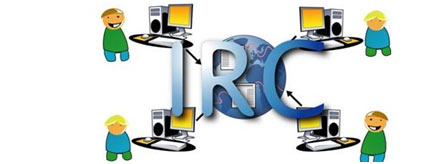Big Carding Tutorial: Step-by-Step Guide for Beginners
Big Carding Tutorial
History of Carding
Carding has a long history that traces back to the early days of the Internet. Initially, carding primarily involved the physical theft of credit card information. However, with the advancement of technology, carding has shifted towards online platforms, making it easier for Carders to carry out their activities anonymously.
Types of Carding
There are two main types of carding: online carding and offline carding.
Online Carding
Online carding involves using stolen credit card information to make purchases on e-commerce websites. Carders target vulnerable websites with weak security measures and exploit loopholes in the payment processing systems to complete transactions.
Online carding is the purchasing of goods done over the internet with the CVV2. Now for you n00bies you’re probably wondering what a CVV2 is, it’s simply just the database of basic info for the card such as the card type (e.g. Mastercard) First and last name, address, and postcode, phone number of the card owner, the expiry date (and start date if it’s a debit card or prepaid CC), the actual CC number and the CVC (card verification code, which is the 3 digits on the back of the card).
This is the format you usually get them in when you buy off IRC:
:::MC ::: John Doe ::: 1234567890123456 ::: 09|11 ::: 01/15 ::: 123 ::: 123 fake street, fakeville, ::: Fake City ::: DE24 TRH ::: 01234-567890 :::
Offline Carding
Offline carding, also known as physical carding, involves using stolen credit card information to create counterfeit physical cards. Carders encode the stolen data onto blank cards and use them to make purchases in physical stores or withdraw cash from ATMs. Offline carding requires specialized equipment and is riskier compared to online carding.
Tools and Equipment for Carding
Carding requires specific tools and equipment to carry out the activities effectively. Here are some commonly used tools and equipment:
- Carding Websites: Online platforms where carders can buy and sell stolen credit card information.
- Carding Software: Specialized computer programs that assist carders with generating card numbers, checking card verification values (CVV), and anonymizing their activities.
- Carding Hardware: Devices used in physical carding, such as card skimmers, card writers, and embossers.
SOCKS and Why We Use Them: Understanding Their Importance in Online Activities
In today’s digital age, where online transactions have become an integral part of our lives, ensuring our privacy and security while browsing the internet is crucial. One of the tools that aid in safeguarding our online activities is SOCKS, an acronym for Socket Secure. In this Big Carding Tutorial, we will delve into the world of SOCKS, explaining their purpose and the benefits they provide. Furthermore, we will explore the concept of cardable sites and shed light on carding non-cardable websites using fake credit card scans and other forged documents.
What Are SOCKS?
SOCKS is a protocol that acts as an intermediary between a client and a server, allowing secure and anonymous communication over a network. It operates at the transport layer, providing a framework for data exchange between devices. SOCKS proxies are commonly used to bypass network restrictions, anonymize web traffic, and enhance security.
The Importance of SOCKS in Online Activities
Enhancing Security and Privacy
When we connect to the internet, our IP address is exposed, making it easier for malicious actors to track our online activities. By using a SOCKS proxy, we can hide our true IP address and replace it with the IP address of the proxy server. This ensures that our online actions remain private and reduces the risk of being targeted by carders.
Bypassing Geo-Restrictions
Many websites and online services impose geo-restrictions, limiting access to users from specific regions. With SOCKS proxies, we can bypass these restrictions by routing our internet traffic through servers located in the desired location. This allows us to access geo-blocked content, such as streaming services or region-specific websites.
Improving Anonymity
In addition to hiding our IP address, SOCKS proxies also offer the benefit of anonymity. By using a proxy server, our online activities are attributed to the proxy’s IP address, making it difficult to trace back to us. This is particularly useful when engaging in activities that require a higher level of anonymity, such as whistleblowing or investigative journalism.
Finding Cardable Sites: Understanding the Term
What Does “Cardable” Mean?
The term “cardable” refers to websites or online platforms that have vulnerabilities in their payment processing systems, making it possible to use stolen credit card information to make unauthorized purchases. Carders, individuals who engage in such activities, exploit these vulnerabilities to their advantage.
The Process of Finding Cardable Sites
Carders employ various methods to identify cardable sites. These methods include:
Online Forums and Communities
Carding communities and forums serve as platforms for individuals to exchange information and share knowledge related to carding. These forums often contain discussions on cardable sites, providing carders with valuable insights and leads.
Vulnerability Scanning Tools
Advanced scanning tools can help carders identify potential vulnerabilities in e-commerce platforms. These tools scan websites for weaknesses in their payment processing systems, identifying targets that may be susceptible to carding.
Social Engineering Techniques
Some carders resort to social engineering techniques, such as phishing or pretexting, to gather sensitive information from individuals or organizations. By tricking people into divulging their credit card details or login credentials, carders gain unauthorized access to cardable sites.
Carding “Non-Cardable Websites” Using Fake CC Scans and Other Forged Documents
Understanding Non-Cardable Websites
Non-cardable websites refer to online platforms that have implemented robust security measures to prevent carding activities, making it challenging to exploit vulnerabilities in their payment systems. However, carders employ innovative techniques to overcome these obstacles.
Fake CC Scans and Forged Documents
Carders often create fake credit card scans and forge supporting documents to deceive the security systems of non-cardable websites. These documents may include counterfeit identification cards, utility bills, or even fake bank statements. By presenting these forged documents, carders aim to pass the verification processes and make unauthorized transactions.

SOCKS proxies play a vital role in maintaining security, privacy, and anonymity in our online activities. They provide a means to bypass network restrictions, hide our true IP address, and access geo-blocked content. Furthermore, we explored the concept of cardable sites and the methods employed to find them. We also discussed how carders overcome the security measures of non-cardable websites using fake credit card scans and forged documents. It is crucial to stay vigilant and prioritize cybersecurity to protect ourselves from malicious actors in the ever-evolving digital landscape.
Carding while on the Job
In the digital age, carding activities have adapted to exploit modern technologies and systems. One such illicit practice is carding, which involves carding activities related to credit card information. Carding while on the job has become a growing concern, as individuals misuse their positions of trust to acquire sensitive card data. In this Big Carding Tutorial, we will explore various methods used by unscrupulous individuals to obtain credit card details, such as CC, CVV, and CVV2, through the use of mobile devices, skimming techniques, and outdated methods like carbonless receipts.
CC, CVV, CVV2: Acquiring Credit Card Information
The process of carding involves obtaining credit card information, such as the card number, expiration date, and CVV/CVV2 (Card Verification Value). While this information is intended to be secure, carders have found ways to exploit vulnerabilities.
Carding Through Mobile Devices
With the widespread use of smartphones, carding has evolved to leverage mobile technology. Unscrupulous individuals may use mobile devices to capture credit card information discreetly. For instance, they might use their smartphones to take pictures or record videos of customers’ credit cards during transactions. This method allows them to gather sensitive data without raising suspicion.
Skimming: A Silent Threat
Skimming is a technique commonly used by Carders to steal credit card information. It involves the use of devices known as skimmers, which are designed to extract data from the magnetic stripe of a credit card. These skimmers can be discreetly installed on point-of-sale (POS) systems, ATMs, or even handheld devices used by employees in various industries.
Carbonless Receipts: An Outdated Method
While advancements in technology have made credit card transactions more secure, it’s essential to be aware of outdated methods that could still pose a risk. One such method involves using carbonless receipts to acquire credit card details. This technique relies on carbon copies of receipts, which can contain sensitive information like the card number and transaction details.
Trashing: A Comprehensive Guide to Receipts and Credit Reports
In today’s digital age, where online transactions and electronic receipts are becoming the norm, the concept of trashing, or dumpster diving, may seem outdated. However, this age-old practice still holds relevance in certain scenarios and can have implications for both individuals and businesses. In this Big Carding Tutorial, we will delve into the world of trashing, exploring its association with receipts and credit reports. By the end, you will have a better understanding of trashing and its potential impact on your personal information security.
1. The Art of Trashing: An Overview
Trashing, in its essence, involves the act of sifting through discarded items, such as trash bins or dumpsters, with the purpose of finding valuable or sensitive information. While it may seem unconventional, trashing has been used to obtain personal details, financial records, and even credit card information. By gaining access to these documents, they can potentially compromise an individual’s financial security and engage in various carding activities.
2. The Relevance of Receipts
Receipts, although seemingly innocuous, can contain a wealth of information that can be exploited if they fall into the wrong hands. From basic details like the transaction date and time to more sensitive information such as credit card numbers or email addresses, receipts can serve as a gateway to potential identity theft or unauthorized transactions.
Trashing and Credit Reports
Credit reports play a pivotal role in assessing an individual’s creditworthiness and financial history. They contain vital information such as credit card accounts, loans, and payment history. Consequently, credit reports are a goldmine for Carders. Trashing can become a potential source of credit report breaches if individuals discard these reports without taking adequate precautions.
Phishing over the Phone – How Does It Work?
Understanding Phone Phishing:
Phone phishing, also known as vishing (voice phishing), involves Carders posing as legitimate entities, such as banks, government agencies, or tech support, to deceive individuals and extract sensitive information. These scammers use various tactics to manipulate their targets, relying on social engineering skills to gain trust and convince victims to disclose personal data or perform harmful actions.
Caller ID Spoofing:
One common technique used in phone phishing is caller ID spoofing. Scammers manipulate the caller ID information displayed on your phone to make it appear as if the call is coming from a trusted source. By spoofing the caller ID, they aim to gain credibility and increase the chances of their hacking attempts being successful.
Impersonating Trusted Organizations:
Phishing over the phone often involves impersonating trusted organizations that individuals have a relationship with. Carders may claim to be calling from your bank, credit card company, or even a government agency, exploiting the trust you have in these entities. They use urgency, fear, or promises of rewards to manipulate victims into divulging sensitive information or taking immediate action.
Social Engineering Techniques:
Phone phishers employ various social engineering techniques to deceive their targets. They may use persuasive language, create a sense of urgency, or instill fear to pressure individuals into providing personal information. Additionally, they might employ pretexts like account verification, security breaches, or exclusive offers to manipulate victims into complying with their requests.
Gathering Personal Information:
During a phone phishing attempt, scammers will attempt to gather personal information that can be used for purposes. This may include sensitive data like Social Security numbers, bank account details, credit card information, passwords, or even answers to security questions. By acquiring such information, attackers can gain unauthorized access to accounts, engage in identity theft, or carry out financial fraud.
Keylogging for CVV2s
Understanding Keylogging:
Keylogging is a technique used to monitor and record keystrokes made on a computer or other electronic devices without the user’s knowledge or consent. It involves capturing every keystroke entered, including passwords, credit card numbers, and other sensitive information. Keyloggers can be implemented through software or hardware, and their primary objective is to gather data covertly.
What are CVV2s?
CVV2 (Card Verification Value 2) is a three-digit security code found on the back of credit and debit cards. Its purpose is to provide an additional layer of security during online transactions. By requesting the CVV2, merchants can verify that the person making the purchase possesses the physical card. This helps prevent unauthorized use of the card for carding activities.
The Significance of CVV2s in Online Transactions:
CVV2s play a crucial role in ensuring the security of online transactions. They serve as a means of verifying the legitimacy of the cardholder and add an extra layer of protection against carding activities. While CVV2s are not foolproof, they provide an additional obstacle for carders attempting to exploit credit card information.
The Dark Side: Keylogging and CVV2s:
carders constantly seek ways to bypass security measures, and keylogging has become one of their preferred methods. By employing keyloggers, hackers can capture CVV2s and other sensitive information as users enter them, compromising the security of online transactions. This illicit practice poses a significant threat to individuals and organizations alike.
Hardware Keyloggers: An Overview:
Hardware keyloggers are physical devices that are discreetly connected between a computer keyboard and the computer itself. Unlike their software counterparts, hardware keyloggers do not require installation on the target system. This makes them difficult to detect and remove, making them a favored tool for carders .
How Does Hardware Keylogging Work?
Hardware keyloggers intercept and record keystrokes by analyzing the electrical signals between the keyboard and the computer. They can capture every keystroke made, including passwords, CVV2s, and other confidential information. The captured data is typically stored in onboard memory or transmitted wirelessly to the attacker for further analysis.
Installation and Configuration of Hardware Keyloggers:
Installing a hardware keylogger requires physical access to the target system. The device is connected between the keyboard cable and the computer, ensuring that all keystrokes pass through it. Once connected, the keylogger can be configured to log and store keystrokes as desired, depending on the attacker’s objectives.
Types of Hardware Keyloggers:
There are various types of hardware keyloggers available, each with its own unique features and capabilities. Some keyloggers resemble ordinary USB connectors, while others may be integrated into devices like keyboards. Wireless keyloggers are also prevalent, enabling attackers to remotely collect the captured data.
Carding In-store
In-store carding is a form of carding activity that involves the unauthorized use of stolen credit card information to make purchases in physical retail stores. This Big Carding Tutorial aims to provide an overview of what in-store carding entails, how it is carried out, and essential tips on how to act and present yourself while engaging in such activities.
Understanding In-store Carding
In-store carding refers to the act of using stolen credit card details to make purchases in physical retail locations. Carders obtain credit card information through various means, such as data breaches, skimming devices, or phishing scams. The stolen information is then used to create counterfeit cards or to make unauthorized transactions.

How In-store Carding Works
The process of in-store carding involves meticulous planning, careful execution, and quick thinking. Carders research target stores, gather stolen credit card information and prepare for the carding process. They choose the right time and location, present themselves confidently, select items to purchase, and avoid suspicion or detection from store employees or security systems.
Researching Target Stores
Successful in-store carding requires thorough research on target stores. Carders look for stores with lenient security measures, weak surveillance systems, and limited staff presence. They often prefer stores located in busy areas where their activities can blend in with the crowd. Researching store layouts and policies can help identify potential vulnerabilities.
Gathering Stolen Credit Card Information
Carders obtain stolen credit card information through various illicit means. This information includes credit card numbers, cardholder names, expiration dates, and CVV codes. They may purchase this data from underground marketplaces or participate in hacking activities themselves.
Preparing for the In-store Carding Process
Carders meticulously prepare for the in-store carding process. This involves creating counterfeit cards using stolen credit card information or encoding the information onto blank cards. They also ensure they have the necessary tools, such as card readers or skimming devices, to carry out the transactions smoothly.
Choosing the Right Time and Location
Timing and location are crucial factors in successful in-store carding. Carders choose busy times when stores are crowded, and employees are more likely to be preoccupied. Additionally, they prefer locations where the store layout provides easy access to exits and minimizes the chances of being caught on surveillance cameras.
Presenting Yourself Confidently
To avoid raising suspicion, Carders need to present themselves confidently during the carding process. They dress appropriately, behaving like regular customers, and maintaining a calm and composed demeanor. Acting naturally and blending in with other shoppers helps minimize the risk of being noticed by store employees.
Selecting Items and Making Purchases
Carders carefully select items to purchase during the carding process. They often prioritize high-value goods that can be easily resold, such as electronics or luxury items. By focusing on items that are in demand and have good resale value, they maximize their potential profits.
Avoiding Suspicion and Detection
Carders take various precautions to avoid raising suspicion or detection. They avoid making multiple transactions at the same store, which could draw attention. They also steer clear of interacting excessively with store employees and avoid using cards for purchases that may require additional verification or identification checks.
Exiting the Store Smoothly
Exiting the store smoothly is a critical step in successful in-store carding. Carders maintain their composure, avoid rushing, and leave the store without drawing any suspicion. They carefully dispose of any evidence or tools used during the carding process, ensuring they do not leave any traces behind.
IRC: An Overview of Services, Advantages, and Disadvantages
In the world of online communication and the big carding tutorial, Internet Relay Chat (IRC) has been a popular platform for decades. With its real-time messaging capabilities, IRC allows users to connect with others around the globe. In this Big Carding Tutorial, we will delve into the services provided by IRC on the big carding tutorial, the advantages of using it for information sharing, as well as the disadvantages associated with this platform. Additionally, we will touch on finding carding channels, approaching vendors, and the caution required while navigating the IRC environment.

Services provided in IRC
IRC offers a wide range of services to its users. It serves as a platform for real-time communication and collaboration through chat rooms called “channels.” These channels can be focused on various topics, such as technology, gaming, or even carding (although we will not delve too deeply into this secretive area).
One of the key features of IRC is the ability to share files through the Direct Client-to-Client (DCC) protocol. Users can exchange files directly with each other, enhancing the efficiency of information sharing. IRC also supports the use of bots, which are automated programs that can perform various tasks, such as providing information, moderating channels, or playing games.
Advantages to using IRC for information sharing
- Real-time communication: IRC provides instant messaging capabilities, allowing users to engage in conversations and obtain information promptly. This real-time aspect is particularly useful for individuals seeking quick responses or engaging in lively discussions.
- Global community: IRC attracts users from around the world, creating a diverse and vibrant community. This global presence offers opportunities for networking, knowledge sharing, and cultural exchange. It enables individuals to connect with like-minded people, fostering collaborations and the exchange of valuable information.
- Privacy and anonymity: IRC allows users to maintain a certain level of privacy and anonymity. Unlike some other platforms, IRC does not require users to disclose personal information during registration. This feature can be advantageous for those who value their privacy or wish to discuss sensitive topics without revealing their identities.
- Customization and control: IRC clients provide users with various customization options, allowing them to personalize their experience. Users can choose different themes, fonts, and notification settings according to their preferences. Additionally, users have control over the channels they join and the discussions they participate in.
Disadvantages of IRC
- Learning curve: IRC can be challenging for newcomers due to its command-driven interface and unique jargon. Understanding IRC commands and conventions may require some time and effort. However, once users become familiar with the basics, they can fully explore and benefit from the platform.
- Security risks: As with any online platform, IRC is not immune to security risks. Malicious users or hackers may attempt to exploit vulnerabilities within the system or manipulate unsuspecting individuals. Therefore, it is crucial for users to exercise caution, avoid sharing personal information, and be mindful of the files they download.
- Limited multimedia support: Compared to modern messaging platforms, IRC has limited support for multimedia content. While users can share files through DCC, the platform does not facilitate the seamless sharing of images, videos, or other multimedia formats. This limitation may not be ideal for individuals who heavily rely on visual or interactive content.
Finding carding channels and approaching vendors
Finding carding channels on IRC is a sensitive topic that we won’t delve deeply into, as it involves secretive activities and potential legal consequences.
Phishing for Change of Billing: Understanding COB and Its Exploitation Methods
In the ever-evolving landscape of cybersecurity threats, phishing continues to be a prevalent and concerning technique used by malicious actors. One particular method that has gained traction is known as “Phishing for Change of Billing” or COB. In this Big Carding Tutorial, we will delve into what COB is, its significance, and how it is employed through phishing pages and keylogging. By understanding these tactics, individuals and organizations can better protect themselves against such attacks.
1. What is COB and Why is it Useful?
COB refers to a deceptive practice where carders attempt to manipulate a victim’s billing information for their own illicit gains. The objective is to trick the target into divulging sensitive financial details, such as credit card numbers, bank account information, or login credentials for online payment systems. By gaining access to this information, attackers can carry out transactions, steal funds, or even assume the victim’s identity.
The reason COB is a favored method among Carders is that billing information is highly valuable. It provides them with direct access to financial resources and the potential to exploit the victim’s accounts or conduct unauthorized transactions. Moreover, compromised billing information can be sold on underground forums, further fueling the motivation for attackers to engage in COB phishing campaigns.
2. COB Exploitation Through Phishing Pages
Phishing pages are websites designed to mimic legitimate platforms, such as banking portals or online payment systems. These phishing websites are carefully crafted to appear authentic, with visually similar layouts, logos, and even domain names. When victims unknowingly access these phishing pages, they are deceived into entering their billing information, which is then captured by the attackers.
To enhance the effectiveness of COB phishing, hackers often employ social engineering techniques. They may send deceptive emails or text messages, posing as trusted organizations, to lure unsuspecting individuals to the phishing pages. These messages typically create a sense of urgency or fear, such as claiming a billing issue or an account suspension that requires immediate attention. By exploiting the victim’s concern or curiosity, attackers increase the likelihood of successful phishing attempts.
3. COB Exploitation Through Keylogging
Another method employed by hackers to carry out COB attacks is keylogging. Keyloggers are malicious software or hardware devices designed to capture and record keystrokes entered by a user. When an unsuspecting victim’s device is infected with keylogging malware, every keystroke, including billing information, is logged and transmitted to the attacker.
Keyloggers can be deployed through various means, such as infected email attachments, compromised websites, or even physical installation on the victim’s device. They can remain undetected, silently collecting sensitive data, until it is retrieved by the attacker. With the captured information, hackers can exploit the victim’s billing accounts or use it as a stepping stone to conduct further attacks, such as identity theft
You can also buy instant:


Cashapp Money Transfer Click here
Paypal Money Transfer Click here
Western Union Money Transfer Click here
Venmo Money Transfer Click here
Bank Money Transfer Click here to Contact Us




